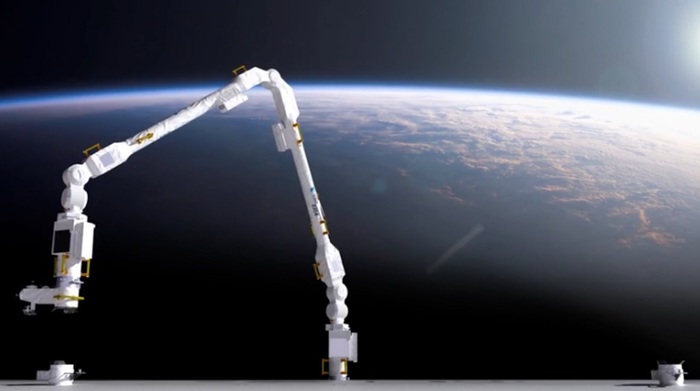The new European robotic arm ERA (European Robotic Arm) for the International Space Station (ISS) was launched on a Proton rocket from the Russian base of Baikonur, in Kazakhstan: 11 meters long, it will be the first robot capable of moving around the modules Russians of the orbital complex, to handle components weighing up to 8,000 kilos with an accuracy of 5 millimeters and to transport astronauts from one job to another. Five spacewalks will be needed to prepare ERA for its first activities, some of which will be carried out by astronauts Samantha Cristoforetti and Matthias Maurer of the European Space Agency (ESA).
The International Space Station is already equipped with two robotic arms: the Canadian and the Japanese, which play a crucial role in the docking of spacecraft and the transfer of payloads and astronauts.
However, neither arm can access the Russian segment.
This is why "the ERA robotic arm will guarantee greater freedom, flexibility and ability to space activities", comments David Parker, ESA's Director of Human and Robotics Exploration.
The launch and installation of ERA represent a first for Europe and Russia in space.
ESA has entrusted a consortium of 22 European companies from seven countries with the construction of the first robot made in Europe, the result of constant efforts for 14 years.
Missed today's #Nauka launch?
Here is the video of this historic event!
By the way, this was the 425th launch of the Proton family rockets.
pic.twitter.com/48dO8ur3wL
- РОСКОСМОС (@roscosmos) July 21, 2021
After launch, ERA is traveling folded up and docked to what will be its main base, the Multipurpose Laboratory Module (also called 'Nauka' in Russian), which will take eight days to lift its orbit and reach the Space Station.
On 29 July, the new module will use its engines to dock automatically in Zvezda in the heart of the Russian segment.
ESA astronaut Thomas Pesquet will welcome the robotic arm and arrange it for the five spacewalks for fine-tuning.









